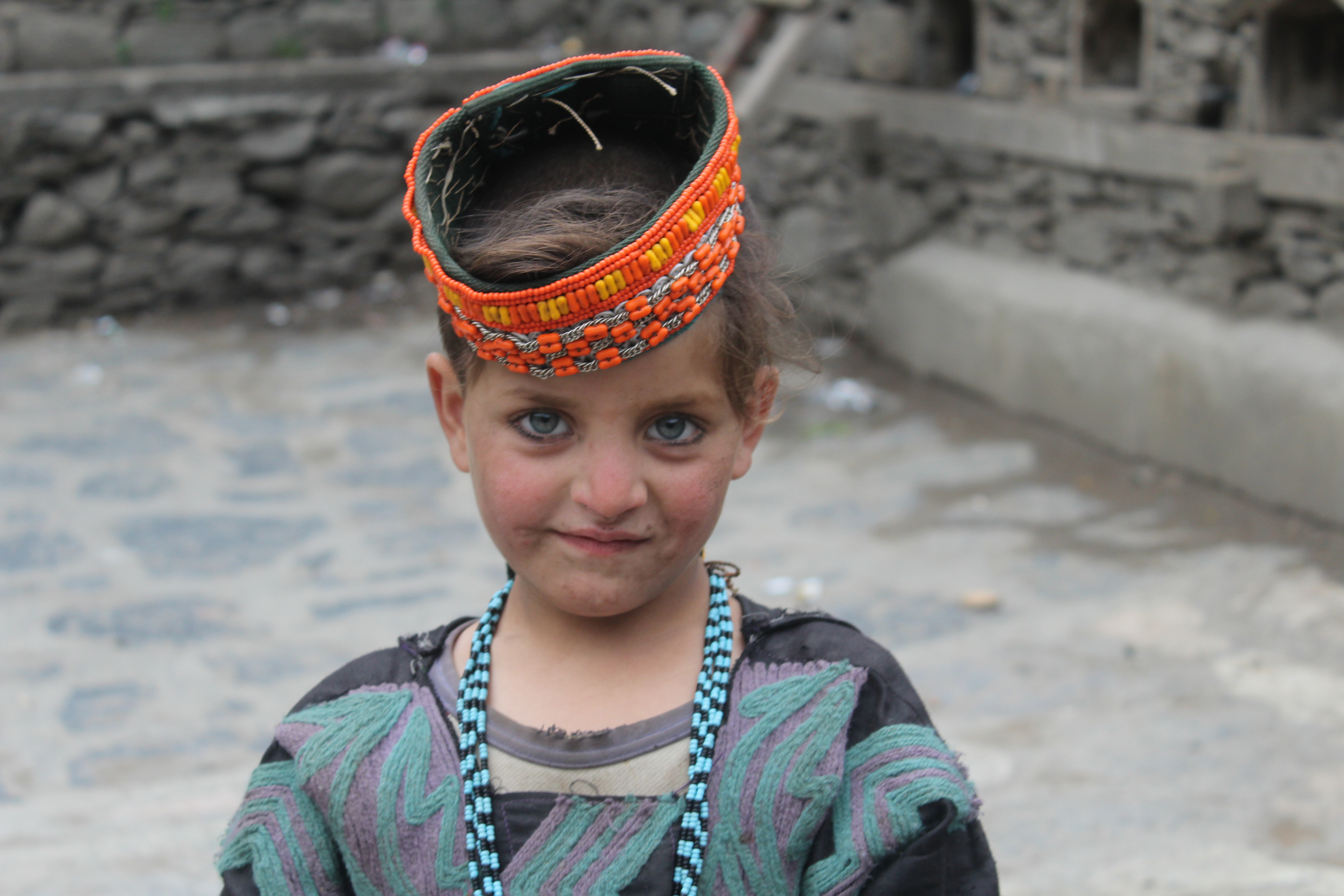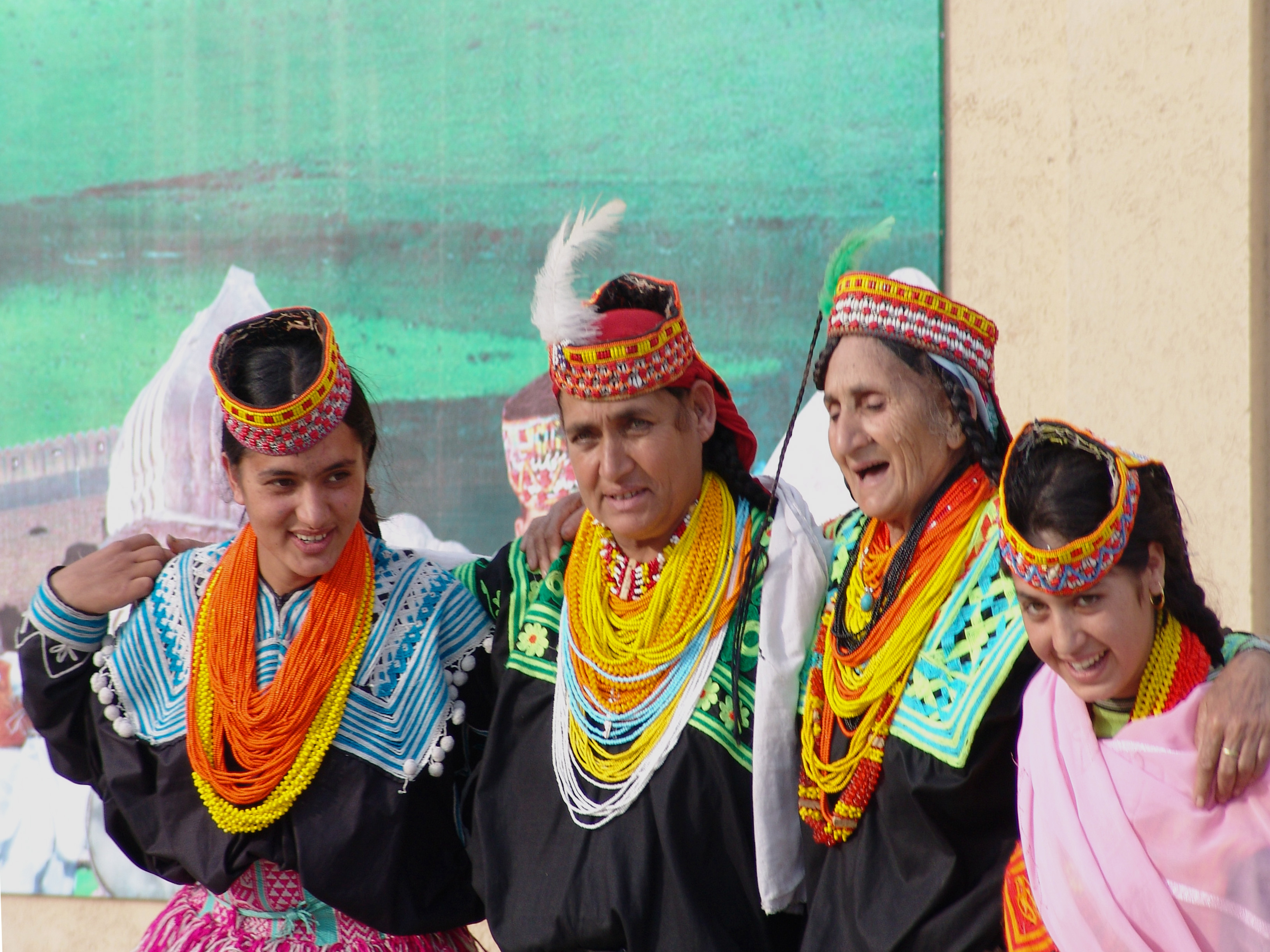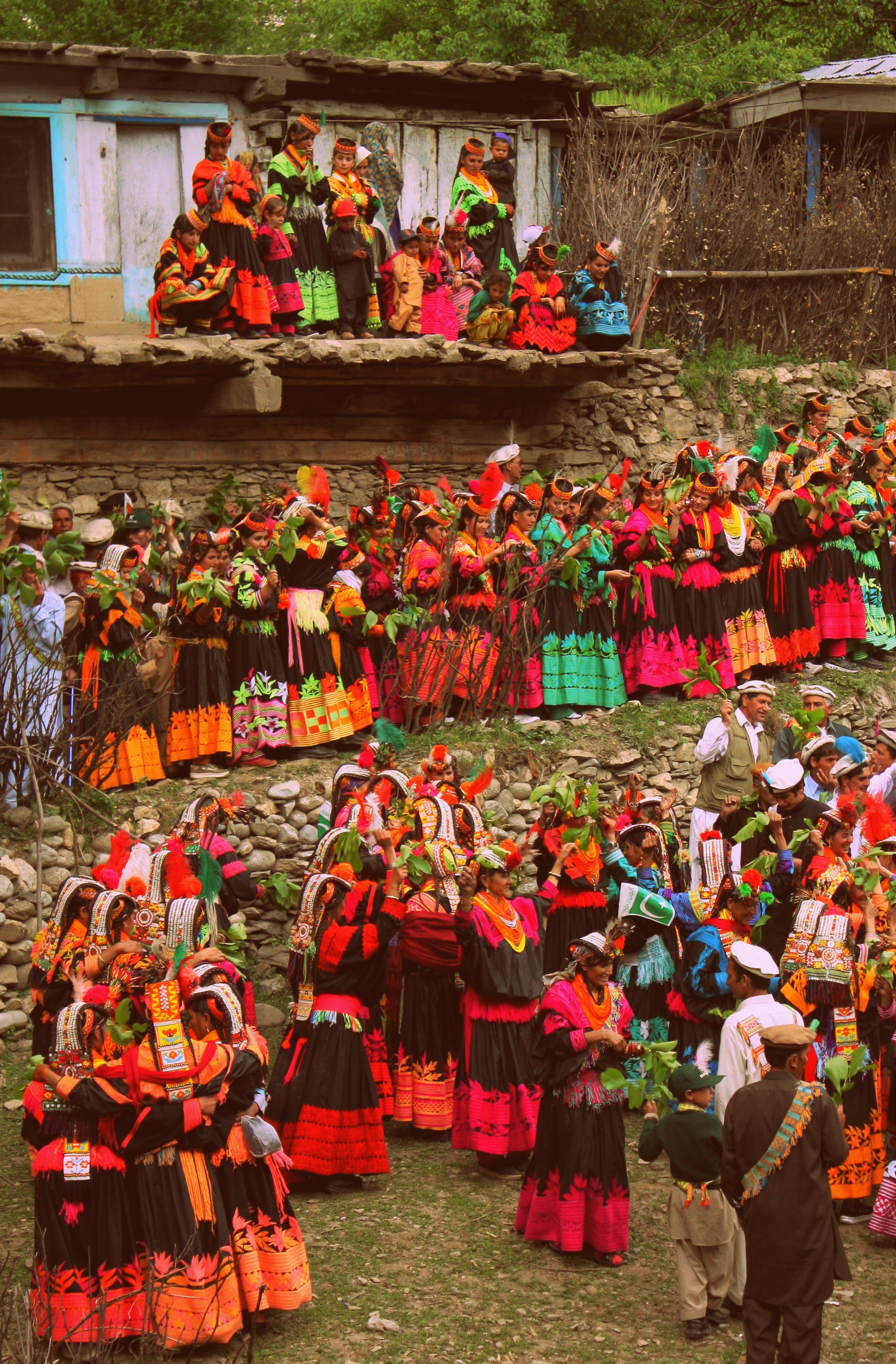Kalash (Pakistani people)
Enlarge text Shrink textThe Kalash (Kalasha: کالؕاشؕا, romanized: Kaḷaṣa), or Kalasha, are a small Indo-Aryan indigenous people residing in the Chitral District of the Khyber-Pakhtunkhwa province of Pakistan. The term is also used to refer to several distinct Nuristani speaking people, including the Väi, the Čima-nišei, the Vântä, plus the Ashkun- and Tregami-speakers. According to one Kalash tradition, their ancestors migrated to Chitral Valley from Nuristan Province, Afghanistan or a location further south, called "Tsiyam" in their folk songs and epics, and possibly located near Jalalabad and Lughman in Afghanistan. Another tradition claims descent from the armies of Alexander who were left behind from his armed campaign, though no evidence exists for him to have passed the area. During the Muslim rule in Chitral in the 14th century most of the Kalash gradually converted to Islam, except a small number of them who upheld their religion and customs, but they were restricted to the Kalasha Valleys of Bumburet, Rumbur and Birir. Prior to the 1940s the Kalash had five valleys, the current three as well as Jinjeret kuh and Urtsun to the south. They are considered unique among the people of Pakistan, and form Pakistan's smallest ethnoreligious group, practising what authors consider as a form of animism and ancestor worship with elements of Indo-Iranian (Vedic- or Hindu-like) religion.
Read more on Wikipedia >
 Topic
Topic












